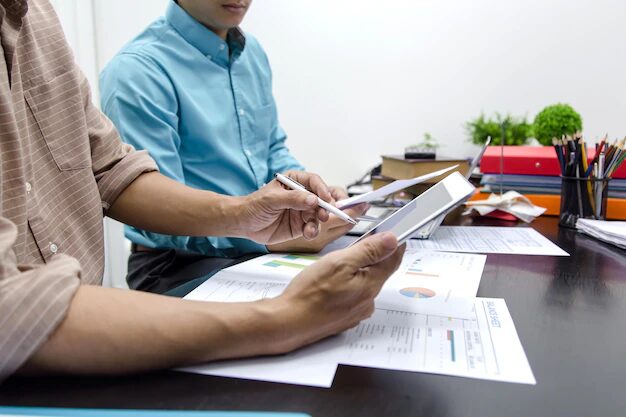If you are a business owner who wants to import goods from China to Croatia, you might be wondering how to do it efficiently and cost-effectively. Shipping from China to Croatia involves many steps and factors, such as logistics, shipping methods, customs, costs, and more. In this article, we will provide you with some useful tips and guidelines on how to ship from China to Croatia successfully.
Understanding the logistics of international shipping

Shipping from China to Croatia is not a simple process. It requires careful planning and coordination of various parties and stages, such as:
- Sourcing: You need to find a reliable and trustworthy supplier in China who can provide you with the products you need, at the quality and quantity you want, and at the price and terms you agree on.
- Transportation: You need to arrange the transportation of your goods from the supplier’s warehouse or factory to the port of departure in China, and from the port of arrival in Croatia to your warehouse or destination. This may involve different modes of transport, such as truck, rail, air, or sea.
- Shipping: You need to choose the most suitable shipping method for your goods, depending on the type, size, weight, value, and urgency of your shipment. You also need to book the space and pay the fees for the shipping service provider, such as a carrier, a freight forwarder, or a courier company.
- Customs: You need to comply with the customs regulations and documentation requirements of both China and Croatia, and pay the duties and taxes for your goods. You also need to prepare and submit the necessary documents, such as invoices, packing lists, certificates of origin, bills of lading, and more.
- Delivery: You need to ensure that your goods are delivered to your warehouse or destination safely and on time, and that they meet your expectations and specifications. You also need to deal with any issues or problems that may arise during or after the delivery, such as damages, losses, delays, or disputes.
As you can see, shipping from China to Croatia is a complex and challenging task that requires a lot of time, effort, and resources. Therefore, it is important to have a clear understanding of the logistics of international shipping and to plan ahead and prepare well for each step and factor.
Choosing the right shipping method

One of the most important decisions you need to make when shipping from China to Croatia is the shipping method. There are mainly three options: sea freight, air freight, and express courier. Each option has its own advantages and disadvantages, and you need to weigh them carefully according to your specific needs and preferences. Here are some factors to consider when choosing the shipping method:
- Cost: Generally speaking, sea freight is the cheapest option, followed by air freight, and then express courier. However, the cost may vary depending on the distance, volume, weight, and value of your shipment, as well as the shipping rates and fees of the service providers. You should compare the quotes from different providers and choose the one that offers the best value for money.
- Speed: Generally speaking, express courier is the fastest option, followed by air freight, and then sea freight. However, the speed may vary depending on the availability, frequency, and reliability of the service providers, as well as the customs clearance and delivery time of both countries. You should check the estimated transit time from different providers and choose the one that meets your deadline and expectations.
- Safety: Generally speaking, express courier is the safest option, followed by air freight, and then sea freight. However, the safety may vary depending on the type, packaging, and handling of your goods, as well as the weather, traffic, and security conditions of both countries. You should check the track record and reputation of the service providers and choose the one that offers the best protection and insurance for your goods.
- Convenience: Generally speaking, express courier is the most convenient option, followed by air freight, and then sea freight. However, the convenience may vary depending on the location, accessibility, and availability of the service providers, as well as the documentation, customs, and delivery procedures of both countries. You should check the service scope and coverage of the service providers and choose the one that offers the most hassle-free and seamless service for your goods.
As you can see, there is no one-size-fits-all answer to the question of which shipping method is the best. You need to evaluate your own situation and priorities and choose the option that suits you the best.
Customs regulations and documentation requirements

Another important aspect of shipping from China to Croatia is the customs clearance. Customs clearance is the process of declaring and verifying the goods that are imported or exported between two countries, and paying the duties and taxes that are applicable. Customs clearance is essential for ensuring the legality, safety, and quality of the goods, as well as the protection of the national interests and sovereignty of both countries.
Customs clearance can be a complicated and time-consuming process that involves many rules, regulations, and documents. Therefore, it is important to have a good knowledge and understanding of the customs requirements and procedures of both China and Croatia, and to prepare and submit the necessary documents accurately and timely. Here are some of the main documents that you need to provide when shipping from China to Croatia:
- Invoice: An invoice is a document that shows the details of the transaction between the seller and the buyer, such as the names, addresses, and contact information of both parties, the description, quantity, and value of the goods, the terms and conditions of the payment, and the currency and exchange rate used. An invoice is used to determine the customs value and the duties and taxes of the goods, as well as to verify the origin and ownership of the goods.
- Packing list: A packing list is a document that shows the details of the packaging and contents of the goods, such as the number, weight, and dimensions of the packages, the marks and numbers of the packages, the description and quantity of the goods in each package, and the total weight and volume of the goods. A packing list is used to facilitate the inspection and identification of the goods, as well as to calculate the freight and insurance charges of the goods.
- Certificate of origin: A certificate of origin is a document that shows the origin or source of the goods, such as the country, region, or factory where the goods were produced or manufactured. A certificate of origin is used to determine the eligibility and preferential treatment of the goods under the trade agreements and policies of both countries, such as the free trade agreement (FTA) between China and the European Union (EU), of which Croatia is a member.
- Bill of lading: A bill of lading is a document that shows the details of the transportation and delivery of the goods, such as the names and addresses of the shipper and the consignee, the name and contact information of the carrier, the port of departure and the port of arrival, the date and time of the shipment and the delivery, the mode and route of the transport, and the terms and conditions of the carriage. A bill of lading is used to prove the contract and the receipt of the goods, as well as to claim the ownership and the responsibility of the goods.
- Other documents: Depending on the type, nature, and purpose of your goods, you may also need to provide other documents, such as certificates, licenses, permits, declarations, or forms, that are required by the specific laws, regulations, or standards of both countries. For example, if you are shipping food, plants, animals, or other products that are subject to sanitary and phytosanitary (SPS) measures, you may need to provide a health or veterinary certificate that shows the compliance and safety of your goods. If you are shipping products that are subject to technical barriers to trade (TBT) measures, such as electrical appliances, toys, or cosmetics, you may need to provide a conformity or quality certificate that shows the compliance and performance of your goods. If you are shipping products that are subject to intellectual property rights (IPR) protection, such as trademarks, patents, or designs, you may need to provide a registration or authorization certificate that shows the legitimacy and validity of your goods.
As you can see, customs clearance is a crucial and complex part of shipping from China to Croatia. Therefore, it is advisable to consult with the customs authorities of both countries, or to hire a professional customs broker or agent, who can help you with the customs clearance process and ensure that your goods are cleared smoothly and quickly.
Calculating shipping costs and managing expenses

One of the main challenges of shipping from China to Croatia is the shipping cost. Shipping cost is the amount of money that you need to pay for the transportation and delivery of your goods from China to Croatia. Shipping cost can be a significant expense that affects your profit margin and competitiveness. Therefore, it is important to calculate and manage your shipping cost effectively and efficiently.
Shipping cost consists of various components and factors, such as:
- Freight rate: Freight rate is the price that the shipping service provider charges you for the transportation of your goods from one point to another. Freight rate depends on the mode, distance, volume, weight, and value of your shipment, as well as the supply and demand of the shipping market. Freight rate can be quoted as a fixed amount per unit, such as per kilogram, per cubic meter, or per container, or as a variable amount based on the actual measurement of your shipment, such as the gross weight, the net weight, or the chargeable weight. Freight rate can also be quoted as an all-in-clusive rate (AI), which includes all the charges and fees related to the transportation of your goods, or as a base rate (BR), which excludes some of the charges and fees that are subject to change or variation, such as fuel surcharge, currency adjustment factor, or peak season surcharge. Freight rate can also be quoted as a spot rate, which is a one-time offer for a specific shipment, or as a contract rate, which is a long-term agreement for a regular or recurring shipment.
- Shipping fees: Shipping fees are the additional charges and fees that the shipping service provider or other parties charge you for the services or facilities that are related to the transportation and delivery of your goods, such as handling, loading, unloading, storage, documentation, insurance, customs clearance, and more. Shipping fees depend on the type, nature, and purpose of your goods, as well as the requirements and procedures of both countries. Shipping fees can be quoted as a fixed amount per unit, such as per kilogram, per cubic meter, or per container, or as a percentage of the freight rate or the customs value of your goods, such as 10% or 20%.
- Duties and taxes: Duties and taxes are the amounts of money that the customs authorities of both countries charge you for the import or export of your goods, such as customs duty, value-added tax (VAT), excise tax, or other levies. Duties and taxes depend on the origin, classification, and value of your goods, as well as the trade agreements and policies of both countries. Duties and taxes can be calculated as a percentage of the customs value of your goods, such as 5% or 15%, or as a specific amount per unit, such as 1 EUR or 2 USD.
As you can see, shipping cost can be a complex and variable amount that consists of many components and factors. Therefore, it is advisable to use a shipping cost calculator or estimator, which is a tool that can help you calculate and compare the shipping cost of different shipping methods and service providers, based on the information and parameters of your shipment. You can find many shipping cost calculators or estimators online, such as the ones provided by Bing, Freightos, or World Freight Rates.
However, you should also be aware that the shipping cost calculator or estimator may not be able to provide you with the exact and final amount of your shipping cost, as it may not include or reflect some of the charges and fees that are subject to change or variation, such as fuel surcharge, currency adjustment factor, peak season surcharge, or other surcharges. Therefore, you should always confirm and verify the shipping cost with the shipping service provider or other parties before you make the final decision and payment.
In addition to calculating your shipping cost, you should also manage your shipping cost effectively and efficiently, by taking some measures and actions, such as:
- Negotiating: You should negotiate with the shipping service provider or other parties for the best possible shipping cost, by leveraging your bargaining power, such as the volume, frequency, or value of your shipment, or the relationship or reputation of your business. You should also compare and contrast the quotes and offers from different providers and parties, and choose the one that offers the best value for money.
- Optimizing: You should optimize your shipping cost by choosing the most suitable and efficient shipping method, mode, route, and time for your goods, based on your needs and preferences. You should also optimize your packaging and labeling of your goods, by using the appropriate and minimal materials, size, and weight, as well as the clear and accurate information and instructions, to reduce the waste, damage, and confusion of your goods.
- Consolidating: You should consolidate your shipping cost by combining or grouping your goods with other goods that are shipped to the same or nearby destination, by using the same or similar shipping method, mode, route, and time. This way, you can share and save the shipping cost with other shippers, as well as increase the utilization and efficiency of the shipping service.
- Budgeting: You should budget your shipping cost by setting and allocating a reasonable and realistic amount of money for the transportation and delivery of your goods, based on your financial situation and goals. You should also monitor and track your shipping cost regularly and accurately, by using the tools and reports that the shipping service provider or other parties provide you, such as invoices, receipts, statements, or dashboards. This way, you can control and manage your shipping cost effectively and efficiently.
Finding reliable shipping partners and freight forwarders

Another crucial aspect of shipping from China to Croatia is the shipping partner or freight forwarder. A shipping partner or freight forwarder is a company or an individual that acts as an intermediary or an agent between you and the shipping service provider or other parties, and helps you with the shipping process and tasks, such as booking, documentation, customs clearance, transportation, delivery, and more.
A shipping partner or freight forwarder can be a valuable and helpful resource for you, as they can offer you many benefits and advantages, such as:
- Expertise: A shipping partner or freight forwarder has the knowledge and experience of the shipping industry and the shipping market, as well as the rules, regulations, and procedures of both countries. They can advise you on the best shipping options and solutions for your goods, and help you avoid or solve any issues or problems that may arise during or after the shipping process.
- Network: A shipping partner or freight forwarder has the connections and relationships with the shipping service providers and other parties, such as carriers, customs brokers, warehouses, and more. They can access and negotiate the best shipping rates and fees for you, and arrange the most suitable and efficient shipping services and facilities for your goods.
- Convenience: A shipping partner or freight forwarder can handle and manage the shipping process and tasks for you, from start to finish. They can save you time, effort, and resources, and allow you to focus on your core business activities and goals.
However, not all shipping partners or freight forwarders are the same. Some may be more reliable, professional, and trustworthy than others. Therefore, it is important to find and choose the right shipping partner or freight forwarder for your business and your goods. Here are some tips and criteria to consider when finding and choosing a shipping partner or freight forwarder:
- License and certification: You should check if the shipping partner or freight forwarder has the valid and relevant license and certification to operate and provide the shipping services and facilities that you need, such as the International Air Transport Association (IATA) license for air freight, or the International Federation of Freight Forwarders Associations (FIATA) membership for freight forwarding.
- Reputation and track record: You should check the reputation and track record of the shipping partner or freight forwarder, by looking at their reviews, ratings, testimonials, or references from their previous or existing customers, partners, or peers. You should also check if they have any complaints, disputes, or legal issues with the authorities, the shipping service providers, or other parties.
- Service and quality: You should check the service and quality of the shipping partner or freight forwarder, by looking at their service scope and coverage, their service level and standard, their service speed and reliability, their service flexibility and customization, their service communication and feedback, and their service protection and insurance.
- Price and value: You should check the price and value of the shipping partner or freight forwarder, by looking at their price structure and transparency, their price competitiveness and affordability, their price stability and consistency, and their price value and return.
Packaging and labeling guidelines for international shipments

Another vital aspect of shipping from China to Croatia is the packaging and labeling of your goods. Packaging and labeling are the processes of preparing and presenting your goods for the transportation and delivery, by using the appropriate and adequate materials, methods, and information, to protect and identify your goods.
Packaging and labeling are important for ensuring the safety, quality, and compliance of your goods, as well as the satisfaction and convenience of your customers. Therefore, it is important to follow some guidelines and best practices when packaging and labeling your goods. Here are some of them:
- Packaging guidelines: You should use the proper and sufficient packaging materials and methods for your goods, such as boxes, crates, pallets, bags, wraps, tapes, straps, and more, depending on the type, size, weight, and value of your goods, as well as the shipping method, mode, route, and time. You should also use the eco-friendly and recyclable packaging materials, whenever possible, to reduce the environmental impact and waste of your goods. You should also follow some packaging tips, such as:
- Use the right size and shape of the packaging, to fit your goods snugly and securely, and to avoid any excess or wasted space or weight.
- Use the strong and sturdy packaging, to withstand the pressure and stress of the transportation and handling, and to prevent any damage or breakage of your goods.
- Use the cushioning and padding materials, such as bubble wrap, foam, paper, or peanuts, to fill the gaps and spaces inside the packaging, and to protect your goods from any shock or vibration.
- Use the sealing and fastening materials, such as tapes, straps, or locks, to close and secure the packaging, and to prevent any opening or tampering of your goods.
- Use the waterproof and weatherproof materials, such as plastic, foil, or wax, to cover and protect the packaging, and to prevent any moisture or contamination of your goods.
- Labeling guidelines: You should use the clear and accurate labeling information and instructions for your goods, such as the names, addresses, and contact information of the shipper and the consignee, the description, quantity, and value of the goods, the shipping method, mode, route, and time, the packaging and handling symbols, such as fragile, this side up, or do not stack, and the customs and regulatory documents, such as invoices, packing lists, certificates of origin, bills of lading, and more, depending on the type, nature, and purpose of your goods, as well as the requirements and procedures of both countries. You should also follow some labeling tips, such as:
- Use the legible and visible labeling, to ensure that the information and instructions can be read and seen easily and clearly, by using the large and bold fonts, the contrasting and bright colors, and the durable and adhesive materials.
- Use the consistent and standardized labeling, to ensure that the information and instructions can be understood and followed correctly and uniformly, by using the common and official languages, the universal and recognized symbols, and the compliant and compatible formats.
- Use the complete and updated labeling, to ensure that the information and instructions can be verified and validated timely and accurately, by providing the full and detailed information, the correct and current information, and the relevant and necessary information.




